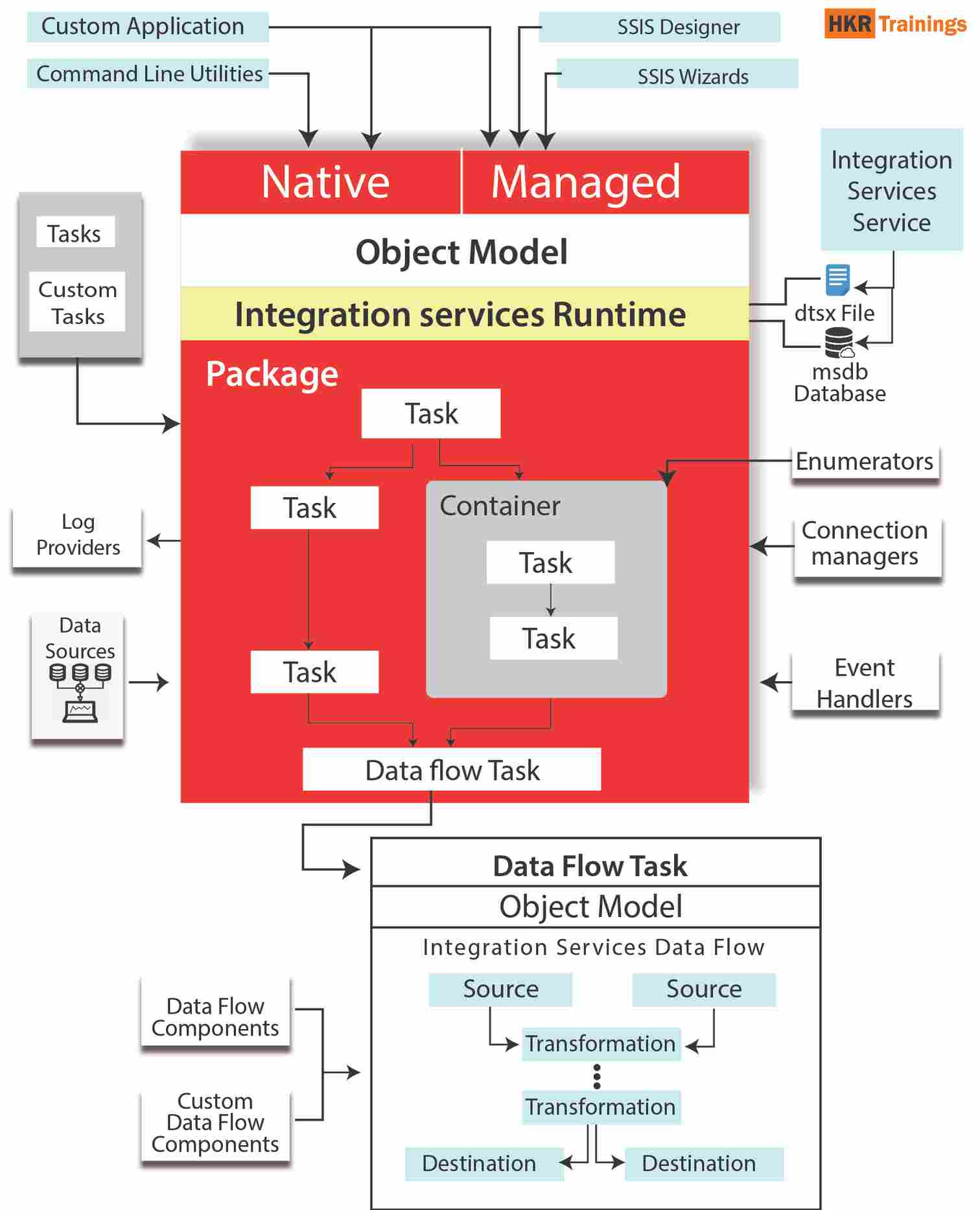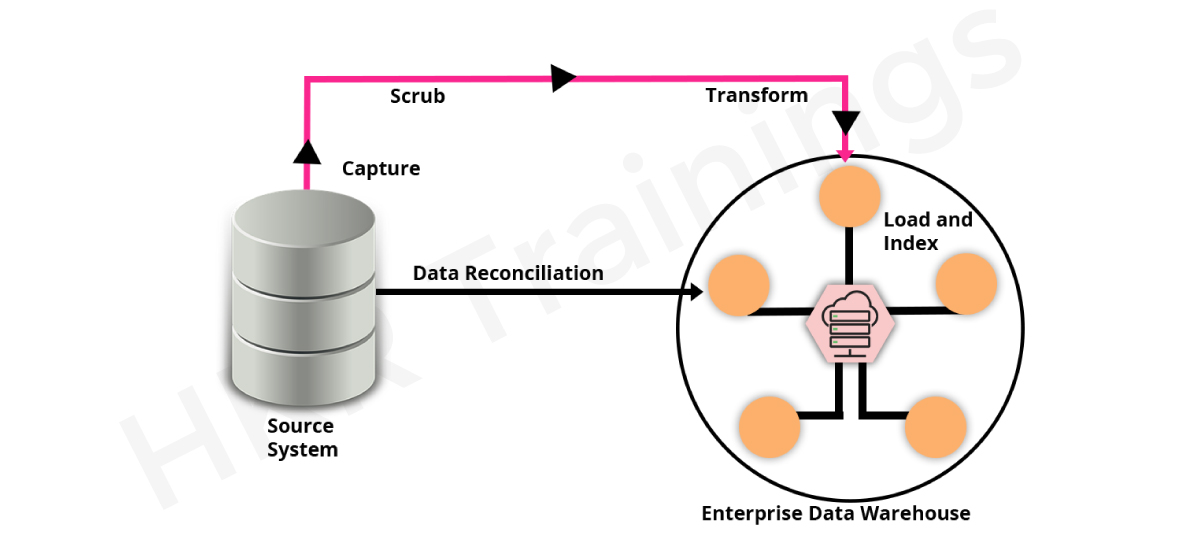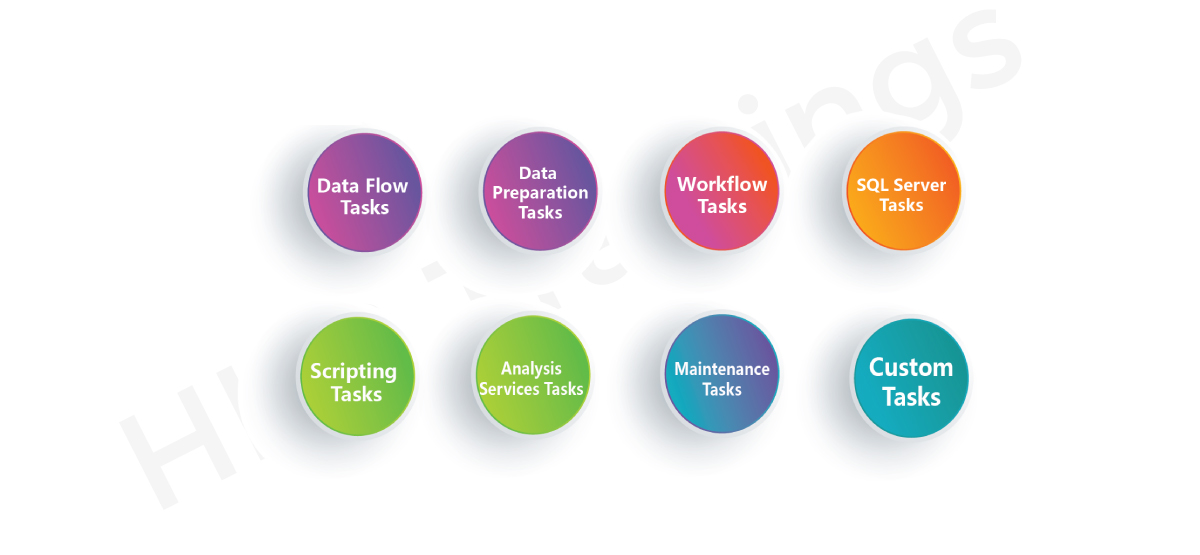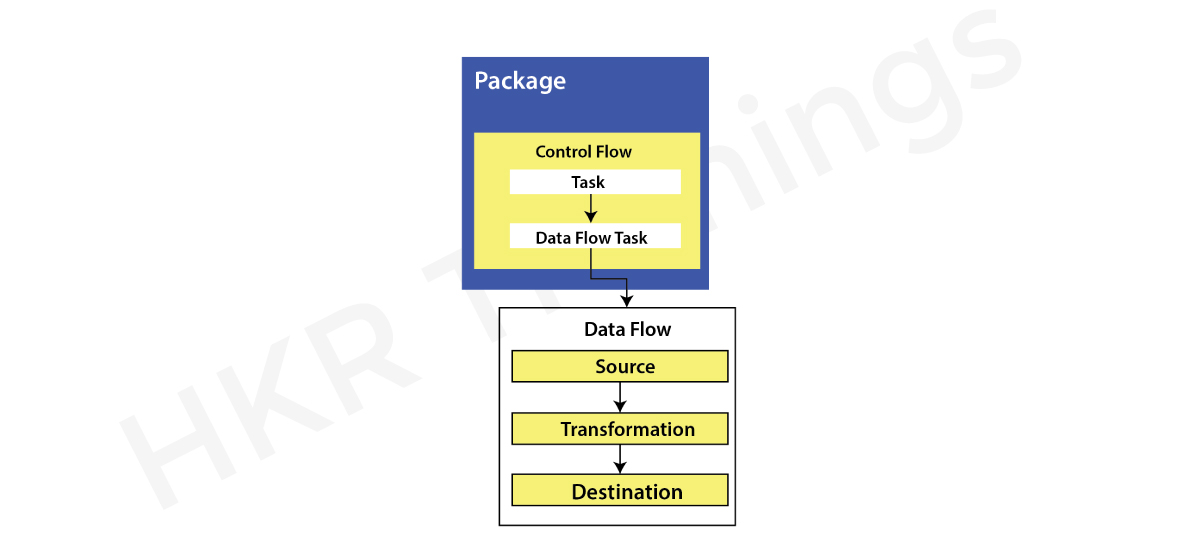What is Data Integration?
Data Integration refers to a procedure that you follow to coordinate the information that you have received from various sources. The information can be either heterogeneous information or homogeneous information. The information can be organized, semi-organized, or unstructured. In Data Integration, the information from various disparate information sources is incorporated to shape some important information. For instance, each organization nowadays needs to process enormous arrangements of information from fluctuated sources. This information should be prepared to give smart data for settling on business choices. So a straightforward arrangement would be information Integration. It will fundamentally coordinate every one of your information present in the various databases and join them on a similar stage.
Before you start learning the SSIS Course we suggest you learn SQL Server basics
What is SSIS?
- SSIS is a platform developed by MS SQL Server and it is the acronym that is used for SQL Server Integration Services.
- It is a segment accessible in the Microsoft SQL Server database programming used to play out a wide scope of joining undertakings.
- It is an information warehousing device utilized for information extraction, stacking the information into another database, changes,for example, cleaning, collecting, consolidating information, and so forth.
- SSIS device likewise contains the graphical devices and window wizards work process capacities, for example, sending email messages,FTP tasks, information sources.
- SSIS is utilized to play out a wide scope of change and reconciliation undertakings.In general,the SSIS device is utilized in information relocation.
Become a SSIS Certified professional by learning this HKR SSIS Certification Training!
What are the uses of SSIS?
Data can be stacked in corresponding to many destinations within the system
SSIS is utilized to consolidate the information from different information sources to produce a solitary structure in a bound together view. Fundamentally, it is answerable for gathering the information, extricating the information from numerous information sources, and converging into a solitary information source.

SSIS Training
- Master Your Craft
- Lifetime LMS & Faculty Access
- 24/7 online expert support
- Real-world & Project-Based Learning
Removes the need for core software engineers
SSIS is a stage that can stack a lot of information from exceeding expectations to a SQL Server database.
Integration with various items
SSIS apparatus furnishes a tight mix with different results of Microsoft.
Cheaper than other ETL apparatuses
SSIS apparatus is less expensive than the greater part of different instruments. It can oppose other base items, their reasonability, business insight, and so forth.
Complex error management of internal dataflows
SSIS permits you to deal with the unpredictable blunder inside a dataflow. You can begin and stop the dataflow dependent on the seriousness of the blunder. You can even send an email to an administrator when some blunder happens. At the point when a blunder is settled, at that point, you can pick the way in the middle of the work process.
The SSIS Architecture

The architecture of SSIS comprises of the following components that are very essential to its functioning. Keep referring to the above diagram when you read the description.
Data flow task: - It characterizes source, mapping, and change. It characterizes the center ETL process.
Control flow task: - This area assists with characterizing rationale and summon tasks like information stream errands, send email tasks, web administration tasks, and so forth.
Package: - This is an assortment of control stream undertakings. It's the unit of work that is recovered, executed, and spared.
Client: – SSIS framework can be associated employing different customers like SSIS originator which accompanies BI IDE, custom applications, SSIS wizard, and so on. These customers utilize the article model to speak with the SSIS framework.
Connection manager and data sources: -This component aids us to characterize association objects with information sources which can be reused in the information stream task.

Subscribe to our YouTube channel to get new updates..!
DTSX files, MSDB, and Integration service: - The complete package can be put away in DTSX records or databases. These bundles can later be associated and summoned utilizing combination administration which runs at the foundation as windows administrations.
Event handlers: - At the time when you run any SSIS bundle, you might want to trap different occasions like OnError, OnPostExecute, OnPreExecuteetc to run certain rationale like signing in to the database, send messages and so on.
How does SSIS work?
Well, we have already established that the developers use SSIS for two purposes, first, to integrate data and second to establish a seamless work process. Both these tasks are executed by using the SSIS bundle. in an SSIS bundle, there are three components that help in the proper execution of the two tasks. These three components are-

Operational data
Operational information is a database used to incorporate the information from various information sources to play out the extra procedure on the information. It is where the information is housed for current activity before sending it to the information distribution center for putting away, revealing, or filing.
ETL
- ETL is the most significant procedure in the SSIS instrument. ETL is utilized to Extract, Transform, and Load the information into an information distribution center.
- ETL is a procedure answerable for pulling out the information from different information sources, changing the information into helpful information, and afterward putting away the information into an information distribution center. The information can be in any arrangement XML record, level document, or any database document.
- It additionally guarantees that the information put away in the information stockroom is significant, exact, high caliber, and helpful to the business clients.
- It can be effortlessly gotten to with the goal that the information distribution center can be utilized adequately and proficiently.
- It likewise causes the association to settle on information-driven choices by recovering the organized and unstructured information from various information sources.
- We all know that ETL is a three-word concept but it has four parts in reality that are essential for the functioning of any package or task.

Capture: The capture stage is otherwise called the Extract stage. In this stage, it picks the source information or metadata, and the information can be in any arrangement, for example, XML record, level document, or any database document.
Scrub: In this stage, the first information is checked. It checks the information, regardless of whether it comprises of any mistakes or not. It checks for the blunders or irregularity of information by utilizing some man-made consciousness methods. To put it plainly, it confirms whether the nature of the item is met or not.
Transform: It is the third stage in ETL. Change is the procedure where the first configuration is changed over into a necessary arrangement that you need. Change is demonstrating or changing the information as per the client prerequisites. The progressions can be either change in the number of segments or lines.
Load and Index: The fourth stage is Load and file. It stacks the information and approves the number of lines that have been handled. When the stacking of information is finished, the ordering is utilized. Ordering causes you to follow the number of lines that are stacked in the information stockroom. Ordering likewise assists with distinguishing the information, regardless of whether it is in the right arrangement or not.
Data Warehouse
In the SSIS environment, data warehouse refers to a solitary, complete, and steady store of information which is figured by joining the information from various data sources.
Top 50 frequently asked SSIS interview questions and answers
SSIS Tasks and their Types
Tasks are control stream components that characterize units of work that are acted in a bundle control stream. A SQL Server Integration Services bundle is comprised of at least one errand. On the off chance that the bundle contains more than one task, they are associated and sequenced in the control stream by priority limitations.
You can likewise compose custom errands utilizing a programming language that bolsters COM, for example, Visual Basic, or a .NET programming language, for example, C#.
Types of Tasks
In SSIS a developer has got the option to choose from the following types of tasks-

Configuration of Tasks in SSIS
The normal SSIS package can contain a solitary undertaking, for example,an Execute SQL task that erases records in a database table when the bundle runs. Be that as it may, bundles normally contain a few errands, and each assignment is set to run inside the setting of the bundle control stream.Occasion handlers, which are work processes that run because of run-time occasions, can likewise have errands.
SSIS Package
In SSIS the term package refers to a bundle that is a sorted out assortment of associations, control stream components, information stream components, occasion handlers, factors, parameters, and setups, that you gather utilizing either the graphical structure apparatuses that SQL Server Integration Services gives, or manufacture automatically. You at that point spare the finished bundle to SQL Server, the SSIS Package Store, or the document framework, or you can send the SSIS version venture to the SSIS server. The bundle is the unit of work that is recovered, executed, and spared.
At the point when you initially make a bundle, it is an unfilled article that sits idle. To add usefulness to a bundle, you include a control stream and, alternatively, at least one information streams to the bundle.
The accompanying chart shows a basic bundle that contains a control stream with a Data Flow Task,which thus contains an information stream.

After you have made the essential bundle, you can include propelled highlights,for example, logging and factors to broaden bundle usefulness. For more data, see the segment about Objects that Extend Package Functionality.
The finished bundle would then be able to be designed by setting bundle level properties that actualize security, empower restarting of bundles from checkpoints, or consolidate exchanges in the bundle work process. For more data, see the area about Properties that Support Extended Features.
Requirements of SSIS
The experts of the field propose the following minimum requirements to run SSIS successfully
- 64-Bit Windows 7 or newer
- Microsoft SQL Server 2008 or newer
- 6 GB hard-disk space
- 4 GB RAM
Having said that they also prescribe the following as the most ideal requirements that will help you to do anything with SSIS with no difficulty at all
- 64-Bit Windows 10 or newer
- Microsoft SQL Server 2012 or newer
- 12 GB hard-disk space
- 8 GB RAM
Some Distinguishable Features of SSIS
- Studio Environment, Packages, Event handler, and Expressions
- Integration capacities are applicable.
- The execution speed is very viable.
- It can be incorporated with other Microsoft SQL Family firmly.
- It underpins information mining inquiry change.
- It has a fluffy query and gathering changes.
- It has superb information availability highlights like the network to SAP or Oracle, and so forth.
Conclusion
We have discussed the basics of SSIS in the above blog. We discussed data integration, the meaning of SSIS, why we use it, it’s working, its architecture, its salient features. I hope that the blog was able to provide you with the information that you were looking for. In case of any queries or doubts, do write back to us. We will be happy to help you.
Other Related articles:
About Author
As a senior Technical Content Writer for HKR Trainings, Gayathri has a good comprehension of the present technical innovations, which incorporates perspectives like Business Intelligence and Analytics. She conveys advanced technical ideas precisely and vividly, as conceivable to the target group, guaranteeing that the content is available to clients. She writes qualitative content in the field of Data Warehousing & ETL, Big Data Analytics, and ERP Tools. Connect me on LinkedIn.
Upcoming SSIS Training Online classes
| Batch starts on 20th Dec 2025 |
|
||
| Batch starts on 24th Dec 2025 |
|
||
| Batch starts on 28th Dec 2025 |
|

